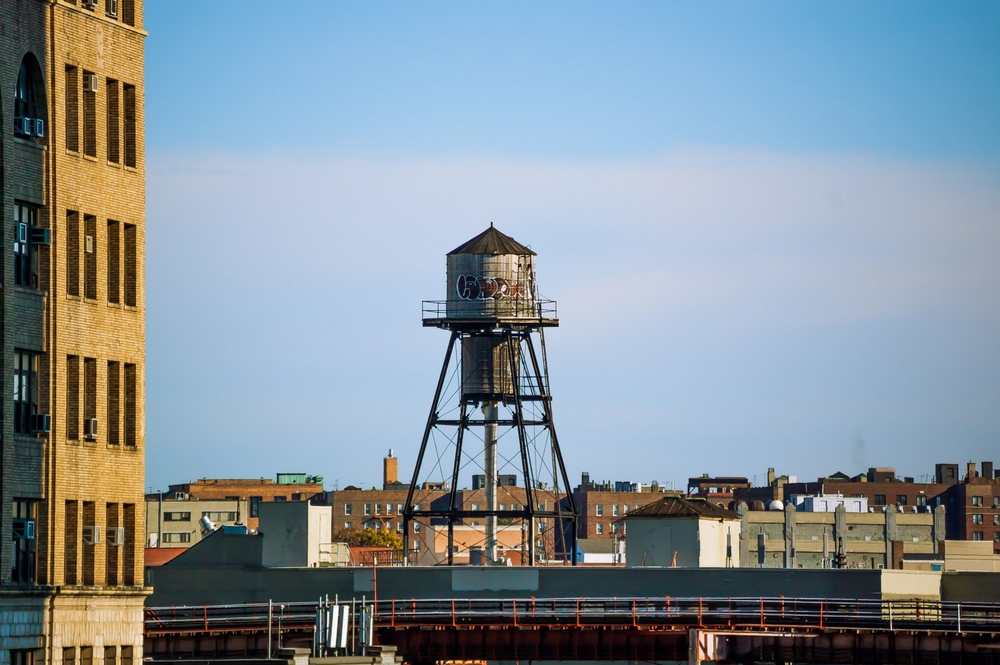How Do Water Towers Work | Uses & Benefits of Water Towers

A water tower is an elevated structure supporting a water tank, as its name implies, built at sufficient height to provide a pressurized supply. The main benefit of a water tower is meeting peaks in consumption without additional pumping power, and it can also serve as an emergency water supply for fire protection systems.
Water towers are built tall to provide pressure, where each foot of height adds 0.43 psi. They must be tall enough to achieve sufficient pressure for the buildings they serve, and are usually located on high ground for a pressure boost.
- In regions with multiple hills, water towers can be replaced by a simple tank on the highest hill in the area.
- In crowded urban places like New York City, smaller water towers can be found above many buildings.
Water supply systems are very complex, but their main elements are water treatment plants, pumping systems and distribution pipes. Municipal water treatment ensures that water is safe and clean before it enters the distribution network. After water leaves the treatment plant, pumping systems establish the required pressure to reach homes and businesses. However, tall buildings normally use a water booster pump, since the supply pressure is not enough to reach the upper floors:
- When the water supply capacity exceeds consumption, the water tower fills up.
- When consumption is higher, the water tower is gradually emptied.
Some common water supplies are wells, rivers and natural reservoirs such as lakes. Water treatment plants remove sediments through filtration and settling, and water is also treated against bacteria with ozone, ultraviolet light and chlorine. Once water leaves the treatment plant, it is a clear and free of germs.
Benefits of a Water Tower

The tanks of water towers are normally large, comparable to a backyard pool in water holding capacity. A common design practice is sizing the water tower according to the consumption of one day, so water can continue descending with gravity if a pumping system fails.
A key advantage of water towers it that they allow pump sizing according to average demand instead of peak demand, reducing the installed cost of the pumping system.
- Without a water tower, a building owner must buy a water pump powerful enough to keep up with peak demand.
- The pumping capacity is underused most of the time, driving up the purchase and maintenance cost without added benefits.
Water towers can handle peak demand without extra pumping power. A clear example is the early morning, when people wake up and get ready for the day: showering, cooking, brushing their teeth, etc. At night, when water consumption is minimal, the tower replenishes itself.
Design a Reliable Potable Water Supply for Your Building
How Water Towers Improve Fire Safety
Water is vital for many fire protection systems and firefighting operations. A well-designed fire protection system can establish enough pressure to extinguish flames in any area of the building. However, a water tower provides an additional supply that does not depend on a fire pump or fire truck to establish pressure.
Since a water tower provides an additional measure for fire protection, it can help reduce fire insurance rates for building owners. In a worst-case scenario where there is no way to pump water to an area affected by fire, the water tower provides a backup measure that does not depend on a pump.
Usage of Water Towers in the US
In New York City, millions of people use water towers located above tall buildings. These tanks provide a water supply that is available even during blackouts. They also complement pumping systems, which would require a very high capacity to serve high-rise buildings by themselves. Water towers provide a convenient solution in NYC, considering the large number of tall buildings.
The oldest operational water tower in the US is the Louisville Water Tower in Kentucky, built in 1860. The second oldest is the iconic Chicago Water Tower, built in 1869. In small towns, water towers may serve an entire community instead of a single building, and they are often shaped and painted with a unique theme about their town.

Keith Fink
Keith is the Franchise Brand Manager at NY Engineers, Keith is all things related to our project portfolio, brands and all things you need to know before we start your project.
Join 15,000+ Fellow Architects and Contractors
Get expert engineering tips straight to your inbox. Subscribe to the NY Engineers Blog below.


